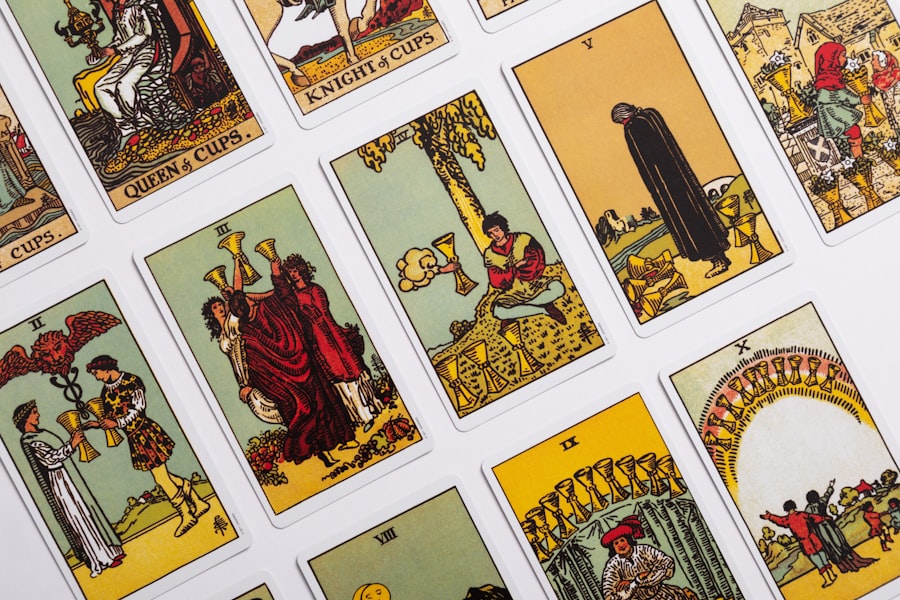
Tarot reading is an ancient practice that has captivated the minds and hearts of many for centuries. At its core, tarot is a tool for divination, a means of gaining insight into the past, present, and future through the interpretation of a deck of cards. Each tarot deck typically consists of 78 cards, divided into two main sections: the Major Arcana and the Minor Arcana.
The Major Arcana comprises 22 cards that represent significant life events, spiritual lessons, and archetypal themes, while the Minor Arcana consists of 56 cards that delve into the day-to-day aspects of life, divided into four suits: Cups, Pentacles, Swords, and Wands. Understanding the symbolism and meanings behind each card is essential for any aspiring tarot reader. Each card carries its own unique imagery, numerology, and associations that can provide profound insights when interpreted correctly.
The interplay between these cards can reveal complex narratives about a querent’s life situation. Moreover, the reader’s intuition plays a crucial role in interpreting the cards; it is not merely about memorizing meanings but also about feeling the energy and context surrounding each card in relation to the question posed.
Key Takeaways
- Tarot reading involves interpreting a deck of cards to gain insight into a person’s life and future.
- Creating a calm and comfortable environment is essential for a successful tarot reading.
- Building a connection with the tarot cards through meditation and visualization can enhance the reading experience.
- Asking open-ended and empowering questions can lead to more insightful tarot readings.
- Interpreting tarot cards for others requires empathy, intuition, and clear communication to provide meaningful guidance.
Setting the Right Atmosphere for a Tarot Reading
Creating an appropriate atmosphere for a tarot reading is vital to ensure that both the reader and the querent feel comfortable and open to the experience. The environment should be conducive to introspection and reflection, free from distractions and interruptions. Dim lighting can help set a calming mood, while soft music or nature sounds may enhance the ambiance.
Some readers prefer to use candles or incense to create a sacred space, as these elements can help ground the energy and invite a sense of spirituality into the reading. In addition to physical elements, it is essential to establish a mental and emotional space that fosters trust and openness. This can be achieved through a brief conversation before the reading begins, allowing the querent to express their intentions and feelings.
Establishing rapport is crucial; it helps to create a safe environment where the querent feels comfortable sharing their thoughts and concerns. A welcoming demeanor, active listening, and empathy can significantly enhance the overall experience, making it more meaningful for both parties involved.
Connecting with the Tarot Cards

The connection between a tarot reader and their cards is often described as a deeply personal bond that evolves over time. Many readers begin their journey by selecting a deck that resonates with them on an emotional or aesthetic level. This initial attraction can be pivotal; it sets the stage for how effectively the reader will be able to interpret the cards.
Once a deck is chosen, it is common practice to spend time familiarizing oneself with each card’s imagery and symbolism.
Moreover, establishing a ritualistic approach to handling the cards can deepen this connection.
Some readers prefer to cleanse their decks regularly using methods such as smudging with sage or placing them under moonlight to recharge their energy. Others may choose to shuffle their cards while focusing on specific intentions or questions, allowing their energy to flow into the deck. This process not only enhances the reader’s intuition but also creates a sacred bond between the reader and their tools, making each reading feel more authentic and insightful.
Asking the Right Questions
The quality of a tarot reading often hinges on the questions posed by the querent. Open-ended questions tend to yield more profound insights than simple yes-or-no inquiries. For example, instead of asking “Will I get this job?” a more effective question might be “What do I need to know about my career path at this moment?” This approach encourages exploration and reflection rather than seeking definitive answers.
It allows the tarot cards to provide guidance on various aspects of the situation rather than just predicting an outcome. Additionally, it is essential for both the reader and querent to engage in a dialogue about the questions being asked. Clarifying intentions can lead to more meaningful interpretations of the cards drawn.
A skilled reader will often help guide the querent in formulating their questions, ensuring they are specific enough to elicit valuable insights while remaining open enough to allow for unexpected revelations. This collaborative process fosters a deeper understanding of the querent’s situation and enhances the overall effectiveness of the reading.
Interpreting the Tarot Cards for Others
Interpreting tarot cards for others requires not only knowledge of card meanings but also an ability to weave those meanings into a coherent narrative that resonates with the querent’s life experiences. Each card drawn during a reading can have multiple interpretations depending on its position in relation to other cards and the context of the question asked. For instance, if The Lovers card appears alongside The Devil card, it may suggest a relationship fraught with temptation or unhealthy dynamics rather than simply indicating love or partnership.
A successful interpretation also involves active listening and empathy. The reader must pay attention not only to the cards but also to the querent’s reactions and emotions during the reading. This attentiveness allows for adjustments in interpretation based on how the querent relates to what is being shared.
It is crucial for readers to remain flexible in their interpretations, as each person’s life story is unique, and what resonates with one individual may not hold true for another.
Providing Support and Guidance after the Reading

Creating a Safe Space
This involves offering reassurance, validating their emotions, or simply being present as they process what has been revealed. Additionally, providing practical advice or resources can be incredibly beneficial for individuals seeking direction after their reading. This might include suggesting journaling exercises to reflect on insights gained during the session or recommending books that align with themes discussed in the reading.
Empowering Individuals
Encouraging individuals to take actionable steps based on their newfound awareness can empower them to navigate their lives with greater clarity and confidence. By doing so, readers can help individuals integrate their experiences into their growth journeys more effectively.
Fostering Ongoing Relationships
Ultimately, fostering an ongoing relationship built on trust and support can enhance the transformative potential of tarot readings, allowing individuals to integrate their experiences into their personal growth journeys effectively.
If you are interested in delving deeper into the world of tarot, you may want to check out the article Unlocking the Wisdom of the Hierophant: Exploring the Significance of the Tarot Card. This article provides valuable insights into the symbolism and meaning behind the Hierophant card, offering a deeper understanding of its significance in tarot readings. By incorporating this knowledge into your tarot practice, you can enhance your ability to provide meaningful and insightful readings for your friends and family.
FAQs
What is Tarot reading?
Tarot reading is a form of divination that uses a deck of cards to gain insight into a person’s past, present, and future. Each card in the deck holds symbolic meanings that can be interpreted by the reader.
How can I read Tarot for friends and family?
To read Tarot for friends and family, you will need to familiarize yourself with the meanings of the cards and practice interpreting them. It’s important to create a comfortable and safe space for the reading, and to approach the process with empathy and an open mind.
What are some tips for reading Tarot for friends and family?
Some tips for reading Tarot for friends and family include setting clear intentions for the reading, encouraging the person to ask specific questions or share their concerns, and providing a non-judgmental and supportive environment for the reading.
Is it important to have experience before reading Tarot for others?
While it’s not necessary to have years of experience, it is important to have a good understanding of the Tarot deck and its meanings before reading for others. Practice and familiarity with the cards will help you provide a more accurate and insightful reading.
What should I do if I receive a negative card during a reading for a friend or family member?
If you receive a negative card during a reading for a friend or family member, it’s important to approach the interpretation with sensitivity and compassion. Focus on providing guidance and support, and offer constructive advice for navigating any challenges indicated by the card.






